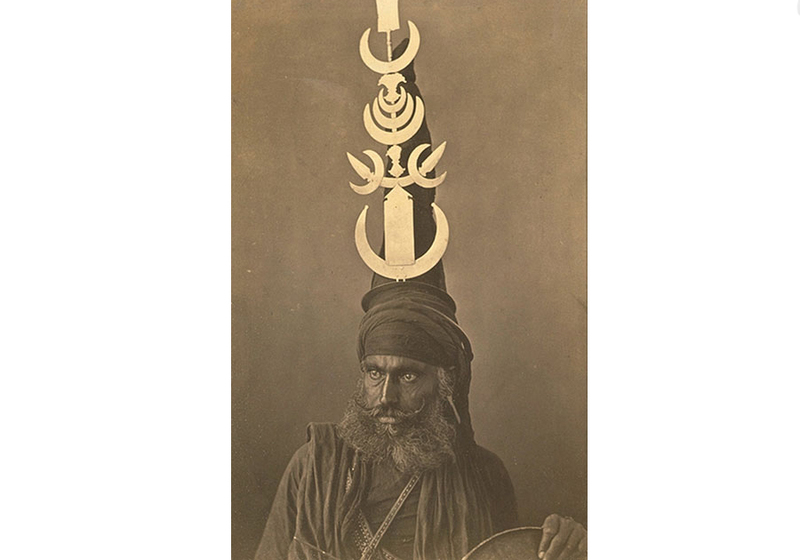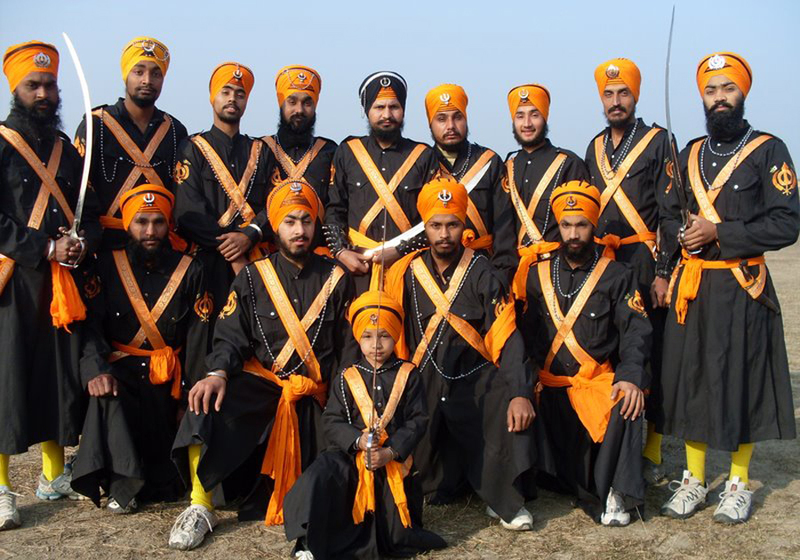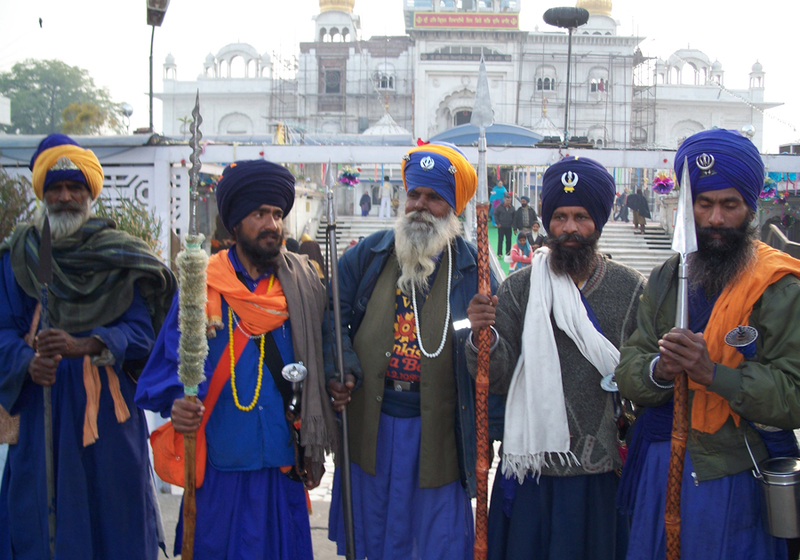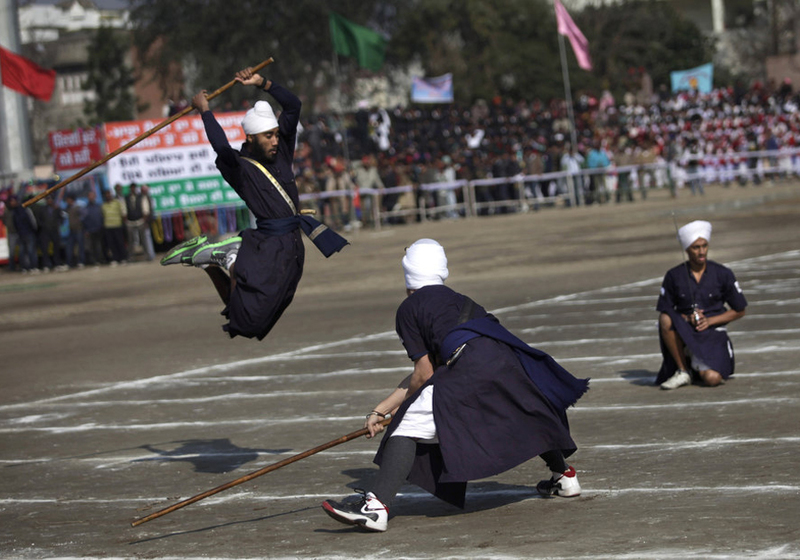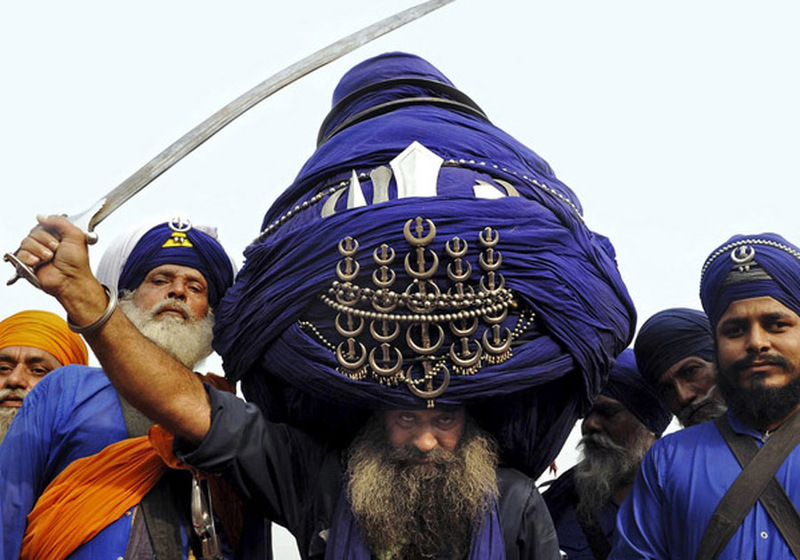Sikhs: So to say, The emergence of a group of Nihangs was the culminating point of a process of militarization of the Sikh community. In the times of Sikhism mainly guerrilla units were consisted of Nihangs who were hiding in the forests from the Mughal and Afghan armies. The Nihangs could easily move around the country and were almost elusive, because they were not tied to any particular territory or a certain village community.
As a matter of fact, the Nihangs forwent family life in favor of life spent in service of Sikh community. They did not have any family, or any property. They had to understand that their main purpose was to protect the Sikh community and the poor of Punjab region from oppression by the rich feudal lords and foreign invaders. Nihangs dedicated all their time to studying and learning the art of warfare.
The way the Nihangs looked was extremely peculiar. They could be immediately distinguishable in any crowd. Their clothes often combine two colors - blue and yellow. Traditional Nihang dress is known as Shiva Swarupa meaning "Shiva's appearance". This comprises full attire of superelectric blue, edged bracelets of iron round their wrists and quoits of steel tiered in their lofty conical blue turbans, together with the traditional sword carried by all baptized Sikhs. When fully armed a Nihang will also bear one or two swords on his right hip, a katara (dagger) on his left hip, a buckler made from buffalo-hide on his back, a large chakram around his neck, and an iron chain. The Nihang were particularly famous for their high turbans. Their turbans were often pointed at the top and outfitted with a trishula or trident, which could be used for stabbing in close-quarters. Other times, the turbans would be armed with a bagh naka (iron claw) and one or several chakram to slice at an opponent's eyes.
Nihangs are known as those who are not afraid of the police or the court. They do not recognize the laws. It is dangerous to argue with Nihangs as without any thinking they turn to using their weapons. Sometimes it is enough to give any Nihang a look so he would feel as being offended.
The basis of Shastar Vidiya - the 'science of weapons' - is the ancient science of the Sikhs about the conduct of combat that consisted of a five-step movement: advance on the opponent, hit his flank, deflect incoming blows, take a commanding position and strike. It was developed by Sikhs in the 17th century.
There is a theory that the English technique of fencing took its basics from the technique of Nihangs’ sword fighting. It is also well known that the British could not ever conquer the Nihangs in the battles for India.
